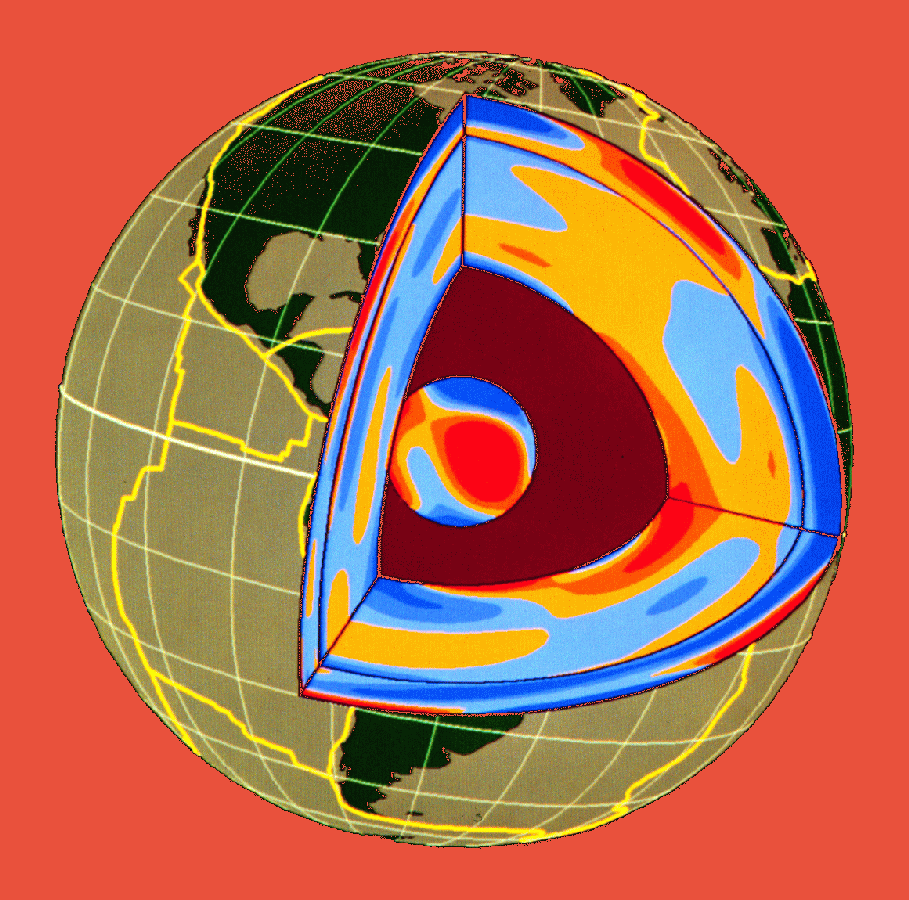

Reference Earth Model
Website
 |
 |
The Reference Earth Model Website |
The ultimate goal of our initiative is to provide the geophysical community with a model (or a set of models - various versions in one and three dimensions) that fits a great variety of geophysical constraints. The spherical average of the model should eventually replace the current PREM (Preliminary Reference Earth Model) that was created in 1981 (Dziewonski and Anderson, Phys. Earth. Planet. Int., 25, 297-356).
Making a reference Earth model that is accepted by a large community is a long process and involves a lot of people of a large group of disciplines. This web page serves as the center to collect and distribute data, models and computer codes so that individuals can participate in the modelling process.
We provide an anonymous ftp site as well as links to contributor's own Web pages and/or ftp sites. If you use data, models, computer codes etc. from this web site in your research, please refer to this site as the source.
If you want to join us, please contact us by email ( gmasters@ucsd.edu).
Objective...read more on the goal of our initiative... |
Call for Contributions |
Subgroups and Data LinksGet a list of subgroups and their current contributor. This link provides data examples and contains the links to other web sites. |
List of ContributorsGet a list of current contributors and short abstracts that were presented at the La Jolla workshop. These abstracts also contain links to contributor's own web sites. We are expanding this list as new contributors join us. |
3D Vs-models
A quick overview and hyperlinks. |
3D Vs-models
Make your own figures |
Summary of the La Jolla WorkshopFind a summary of the first REM Workshop that was held in La Jolla in May 1997. A follow-up workshop was held at Harvard University in May 2000. |
Exchange Format SpecificationsContributor should agree on a uniform format in which the model(s) will be distributed. Find here a draft version of possible format specifications. |
How to find usGet maps to visit IGPP, La Jolla. |
Upcoming Events |
CIDER PROGRAMFind a summary of the program and a link to the web site. |
Since the publication of the Preliminary Reference Earth Model (PREM) in 1981, there has been a dramatic increase in the quantity and quality of seismic data as well as an appreciation and understanding of the effects of 3D structure. Furthermore, there is now a sense that a model unifying several aspects of global geophysics and geochemistry is a possibility in the forseeable future.
Such thinking has led to several CSEDI-sponsored workshops on new Earth models, the latest being at La Jolla in May, 1997. The purpose of this web page is to summarize the recommendations of the La Jolla workshop and to discuss the progress that has been made since.
The time has come to revisit the question of spherically-symmetric reference Earth models and to begin the process of developing reference 3D models and datasets. We regard this process as a community effort with input necessary from the wide range of possible users (e.g. mineral physicists and geodynamicists) and not just seismologists.
While the ultimate goal of this work is a very general reference Earth model, we initially concentrate on seismological aspects and discuss the parameterizations and data sets that are currently being considered for a new seismological REM. In particular, we have been compiling data sets of travel times and t* , free oscillation frequencies and attenuations, and surface wave dispersion data. Many workers have contributed to these compilations, and the data, as well as codes to model them, will be available through this page ( People wishing to contribute to this effort, click here ).
topDear Colleague,
We would like to start collating data sets that might be used to constrain a REM. We can collect data sets at a common ftp site or we can put links to your site from the REM homepage. Please advise us how you would like to distribute your data and provide us with a brief description which can be put on the web. (Note that we are not just talking about seismological data sets though that will be the main focus of this first effort). We are also interested in making codes available which are useful for interpreting the data -- some codes are already available via ftp from various sources and we will make code available for doing some of the basic seismological calculations (e.g. computing free oscillation frequencies for 1d earth models). If you have such code that is documented well enough to be used by others, and would like it advertised or distributed by us then please send us an email. Please send a title and brief abstract to gmasters@ucsd.edu. We will put the abstracts on the web in a list of participants. Guy, Adam, and Gabi| PS: Your feedback is important to construct a reference model that is accepted by a large community, so we encourage you to participate. |
Goto
Whole Earth Geophysics page
Goto
Scripps Tomographic Models page
 To IGPP Home
To IGPP Home